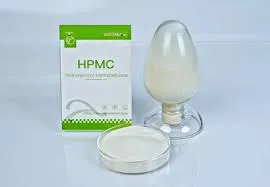
Oct . 13, 2024 06:47 Back to list
Exploring the Properties and Characteristics of HPMC for Various Applications
Understanding HPMC Properties Applications and Benefits
Hydroxypropyl Methylcellulose (HPMC) is a semi-synthetic polymer derived from cellulose, which is known for its versatile properties that make it suitable for various applications across multiple industries. Its unique characteristics, including biocompatibility, thermal stability, and excellent film-forming capabilities, make it a preferred choice in pharmaceuticals, food, cosmetics, and construction.
Understanding HPMC Properties Applications and Benefits
In addition to its thickening and binding properties, HPMC is also a powerful emulsifier. Its ability to stabilize emulsions means that it is frequently used in food products, such as sauces, dressings, and dairy alternatives. HPMC helps maintain a uniform mixture, preventing separation and ensuring a consistent product. Furthermore, it contributes to the mouthfeel and overall sensory experience of food products, making it an essential ingredient in the food industry.
hpmc properties

Another notable property of HPMC is its solubility in both hot and cold water. This characteristic makes HPMC easy to incorporate into various formulations without the need for complex processing. In the construction industry, HPMC is used in tile adhesives, mortars, and cement-based products to enhance workability and improve adhesion. Its water-retention capability ensures that these products remain workable for longer periods, allowing for extended application times before setting.
In cosmetics and personal care products, HPMC is prized for its film-forming and moisturizing properties. It acts as a thickening agent in lotions, creams, and gels, providing a desirable texture and improving the product's stability. Additionally, HPMC can create a protective barrier on the skin, helping to retain moisture and improve skin hydration, making it a common ingredient in moisturizing formulations.
Biocompatibility is another commendable property of HPMC, which makes it suitable for use in medical applications. It is often used in the formulation of drug delivery systems, wound dressings, and as a component in ophthalmic solutions due to its compatibility with biological tissues. Moreover, because HPMC is derived from natural cellulose, it is non-toxic and environmentally friendly, aligning with the growing demand for sustainable and responsible ingredients in various markets.
In summary, HPMC is a multifaceted polymer with a broad spectrum of applications due to its remarkable properties, including thickening, binding, emulsifying, and film-forming. Its versatility across industries such as pharmaceuticals, food, cosmetics, and construction underlines its importance in modern formulations. As industries continue to seek innovative solutions and sustainable ingredients, the demand for HPMC is expected to grow, highlighting its significance in both current and future applications. Understanding the properties of HPMC allows manufacturers and formulators to leverage its benefits effectively, paving the way for the development of improved products that meet consumer needs.
-
Versatile Hpmc Uses in Different Industries
NewsJun.19,2025
-
Redispersible Powder's Role in Enhancing Durability of Construction Products
NewsJun.19,2025
-
Hydroxyethyl Cellulose Applications Driving Green Industrial Processes
NewsJun.19,2025
-
Exploring Different Redispersible Polymer Powder
NewsJun.19,2025
-
Choosing the Right Mortar Bonding Agent
NewsJun.19,2025
-
Applications and Significance of China Hpmc in Modern Industries
NewsJun.19,2025







